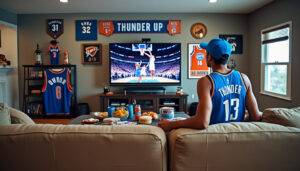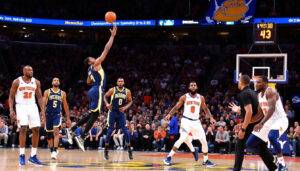Exploring the vital role of NBA ball boys, the league's hidden champions
Behind the roaring crowds and dazzling dunks of the NBA lies an underappreciated battalion—the ball boys, or more appropriately, the “ball people.” These individuals, often aging from late teens to seasoned mid-career workers, are the silent gears without which games simply cannot operate smoothly. From aggressively rebounding errant shots in player warmups to tirelessly mopping sweat during fast breaks, their work may lack the flash of a game-winning buzzer-beater, but their impact on the league's rhythm and athlete safety is colossal. This critical yet overlooked NBA workforce embodies professionalism and grit, their efforts weaving into the complex fabric of a high-stakes NBA game day experience.
The Unseen Excellence of NBA Ball Boys: Key Responsibilities and Challenges
What appears as a simple task of handing players basketballs during warmups quickly escalates into a high-octane operation demanding speed, stamina, and sharp focus. Take Oklahoma City Thunder’s Joel Yasuda and his cohort during one high-profile game against the Denver Nuggets:
- Rebounding warmup shots: Three basketballs soar around multiple players simultaneously, requiring ball boys to dodge and corral flying balls without failing a beat.
- Sweat management: Thousands of drops of sweat mix with sebum to create an oily film, turning courts into slip hazards. The towel crew, operating with pinpoint timing during live play, mitigates injury risks by ensuring surfaces remain dry.
- In-game agility: Ball boys, or “tac team” members, sprint, crouch, and mop in a choreographed fashion, often while a play is still unfolding near them.
- Logistical support: They handle everything from ensuring players have their preferred equipment—shoes often signed off by Jordan Brand, Adidas, Nike, and Under Armour—to fielding last-minute dietary or gear requests.
While these tasks seem menial to outsiders, their execution demands relentless dedication and poise, reinforcing the NBA’s professional ecosystem.
The Evolution of the Ball Boy Role in the NBA
The job today is worlds apart from its humble origins. Back in 1979, when Marc St. Yves joined as a 13-year-old ball boy for the Seattle SuperSonics, the role was often a catchall position with trivial pay and little formal training. Fast forward to 2025, and the Thunder employ a team of 24 ball boys, with a dedicated VP of logistics ensuring this crew operates like a strategic unit.
- Professionalization: Ball boys now undergo annual combines to test their skills in hustle, cleaning, and rebounding—far from the casual jobs of yesteryear.
- Career ladders: Names like Wilson Taylor, who climbed from rookie ball boy to the NBA’s Equipment Manager of the Year, set pathways encouraging young workers to envision prolonged careers in basketball support.
- Increased gender diversity: The term “ball boy” has fallen out of favor, replaced by culturally and gender-neutral terms to recognize that this workforce includes both men and women making equal contributions.
- Higher stakes: Teams now invest heavily in state-of-the-art facilities, with equipment rooms stocked with everything from Champion towels to Spalding basketballs ensuring elite standards on the floor.
The role’s growth parallels the exploded commercial scope of the league itself—one now intertwined with global brands like Puma and Reebok, whose partnerships seep deep into player gear and arena logistics.
Lessons from the Court: How Ball Boys Influence Elite Player Performance
NBA superstars rarely mention their ball people, but their influence seeps into the game’s flow and player confidence. Shai Gilgeous-Alexander’s warm-ups are a prime example. An MVP candidate, SGA’s brief shooting slump was snapped within seconds, thanks to quick passes from three closely coordinating ball boys who ensured he got continuous attempts without the hassle of rebound retrieval.
- Shooting rhythm: Access to rapid-fire rebounds during warmups helps players like Holmgren find their range, crucial for success in pressure-packed NBA arenas.
- Minimized distractions: By managing the court’s cleanliness and meeting player needs seamlessly, ball boys allow athletes to maintain mental focus on their game rather than logistical annoyances.
- Injury prevention: Removing sweat quickly and efficiently alleviates fall risks, a safety net that can be the difference in playoff runs where every game counts.
- Emotional support: Familiar faces like Marty Jones, a middle school teacher doubling as ball personnel, bring stability and trust to both home and visiting teams.
In sum, these behind-the-scenes figures shape a player’s environment—from pre-game preparation through the substitution bench—underscoring the deeper fabric of NBA success stories.
How NBA Ball Personnel Embody Dedication and Resilience
Facing long days that blend physical labor with intense situational awareness, the ball people are often young adults juggling college, ambitions, and unlikely to clock out before all sweat is cleared. Joel Yasuda, for instance:
- Time management: Balances finance studies with grueling game day shifts, spanning 72-hour periods filled with court hustle.
- Career aspirations: While many peers seek nightlife distractions, he sees NBA support work as a lifetime pursuit.
- Physical demand: Tackles quick mop-ups, awkward angles on court spills, and almost accidental collisions—all executed without disrupting game pace.
- Team culture: Joins a tightly knit group fostered by veterans like Taylor, whose leadership is both professional and empathetic.
Their role demands not only athleticism but a passion for basketball and a willingness to serve quietly yet indispensably. This mindset is a testament to the often overlooked human element underneath the glittering NBA spotlight.
Brand Synergies and Equipment Excellence Behind the Scenes
The NBA’s ecosystem relies on partnerships with top-tier brands to support ball people and players alike. From the hoops they chase to the towels they wield, these collaborations optimize performance and comfort:
- Basketballs: Spalding and Wilson still dominate, ensuring uniform bounce and grip essential for flawless play.
- Gear and apparel: Nike, Adidas, and Jordan Brand equip players and ball staff with the latest tech-infused sneakers and kits.
- Uniform care: Mitchell & Ness delivers retro-inspired warmup gear preserved by countless laundering cycles overseen by the Thunder’s sophisticated equipment teams.
- On-court essentials: Towels from Champion and Puma, alongside moisturizers and hygiene products, keep athletes fresh as they battle through grueling minutes.
- Support & grooming: Reebok and Under Armour supply ancillary products boosting player readiness, comfort, and injury prevention.
These brand relationships underscore how deeply woven sponsorship and performance are in the NBA’s operational matrix, extending far beyond court action to encompass every facet of an athlete’s experience—from warm-ups to post-game recovery.
More Than Just Ball Boys: The Human Stories Driving NBA Game Days
The careers of figures like Wilson Taylor and Marty Jones illustrate the depth and human side of this unheralded role. Taylor, now an award-winning equipment manager, embodies a pathway of perseverance and skill development starting from stepping into a ball boy’s sneakers. Jones, balancing a teaching career while serving the visiting team, represents the passion many bring simply for love of the game:
- Bridging generations: The longevity and commitment of staff who have worked decades alongside NBA legends, including the likes of Shaquille O’Neal with his infamous demand for a Walkman mid-game.
- Player relationships: Trust forged by anticipating needs—whether a fan-favorite’s preferred "straw logs" or customized practice footwear—strengthens a team’s chemistry off the court.
- Community roots: Many ball people grew up attending games, inspired by their idols' dedication and the unseen teamwork that fuels the spectacle.
- Career development: The NBA’s structured development programs allow ball people to envision future full-time roles beyond game days.
In 2025, these individuals represent not only operational necessity but the beating heart and soul of NBA game nights, giving us a glimpse into a world where passion and performance collide seamlessly.
For insights into NBA player journeys and off-court pursuits, check out legendary figures' stories:

